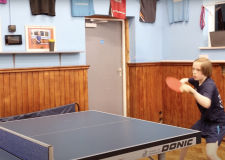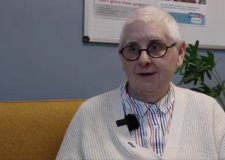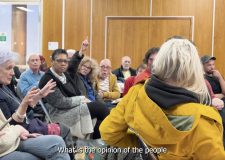Plinth campaigners hope to bring public art to Hove
Hove Civic Society wants to build a plinth to showcase public art on the seafront.
The society is asking Brighton and Hove City Council for landlord’s consent so that it can display temporary sculptures and works of art.
The application will be heard by the council’s Economic Development and Culture Committee next Thursday (10 January). A report about the application can be read here.
The society wants the plinth to be sited in King’s Esplanade, opposite the statue of Queen Victoria, at the southern end of Grand Avenue.
The plinth will be subject to planning permission.
Councillor Geoffrey Bowden, chairman of the Economic Development and Culture Committee said: “If the initiative is approved, the seafront plinth will become a cultural focal point for Hove and continue the long tradition of statues and monuments in the city.
“I think it’s a great idea and I love it. I know the society has been working on this for some time and I really hope it happens.”
The society is aiming to create a link between the heritage and history of the area and the contemporary world.
It wants the plinth to showcase stimulating and inspirational sculptures, some of which will be borrowed and some of which will be commissioned. And it hopes to involve local artists and cultural partners.
The Brighton Festival, Brighton Museum and Art Gallery and the community arts organisation Same Sky have all voiced support for the idea.
The society is to host a lecture entitled Public Sculpture in Brighton and Hove – Past and Future.
The former head of arts at Brighton University Peter Seddon, from the Sussex Sculpture Recording Project, and Karin Janzon, from the Hove Public Sculpture Initiative, will give the talk.
The event starts at 7.30pm on Thursday 24 January at the Courtlands Hotel in The Drive, Hove. Entrance is free to members and £3 for others.
The idea has echoes of the Fourth Plinth Project in Trafalgar Square, London.
The plinth was designed by the architect Sir Charles Barry when he remodelled Trafalgar Square in the 1840s.
He also designed the original Royal Sussex County Hospital building which opened in 1828. The hospital, in Kemp Town, has grown so much that Barry’s contribution is known as the Barry Building. It is due to be demolished.
Barry also designed St Peter’s Church in Brighton, St Andrew’s Church in Waterloo Street, Hove, and the Pepper Pot by Queen’s Park as well as the Palace of Westminster, home of Parliament.
One of the first works featured on the fourth plinth, which stood empty for 158 years, was the transparent resin Monument by Rachel Whiteread, who studied at Brighton Polytechnic, now Brighton University.
Another fourth plinth sculpture was Alison Lapper Pregnant by Marc Quinn. Lapper also studied art at Brighton University.




















